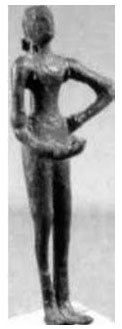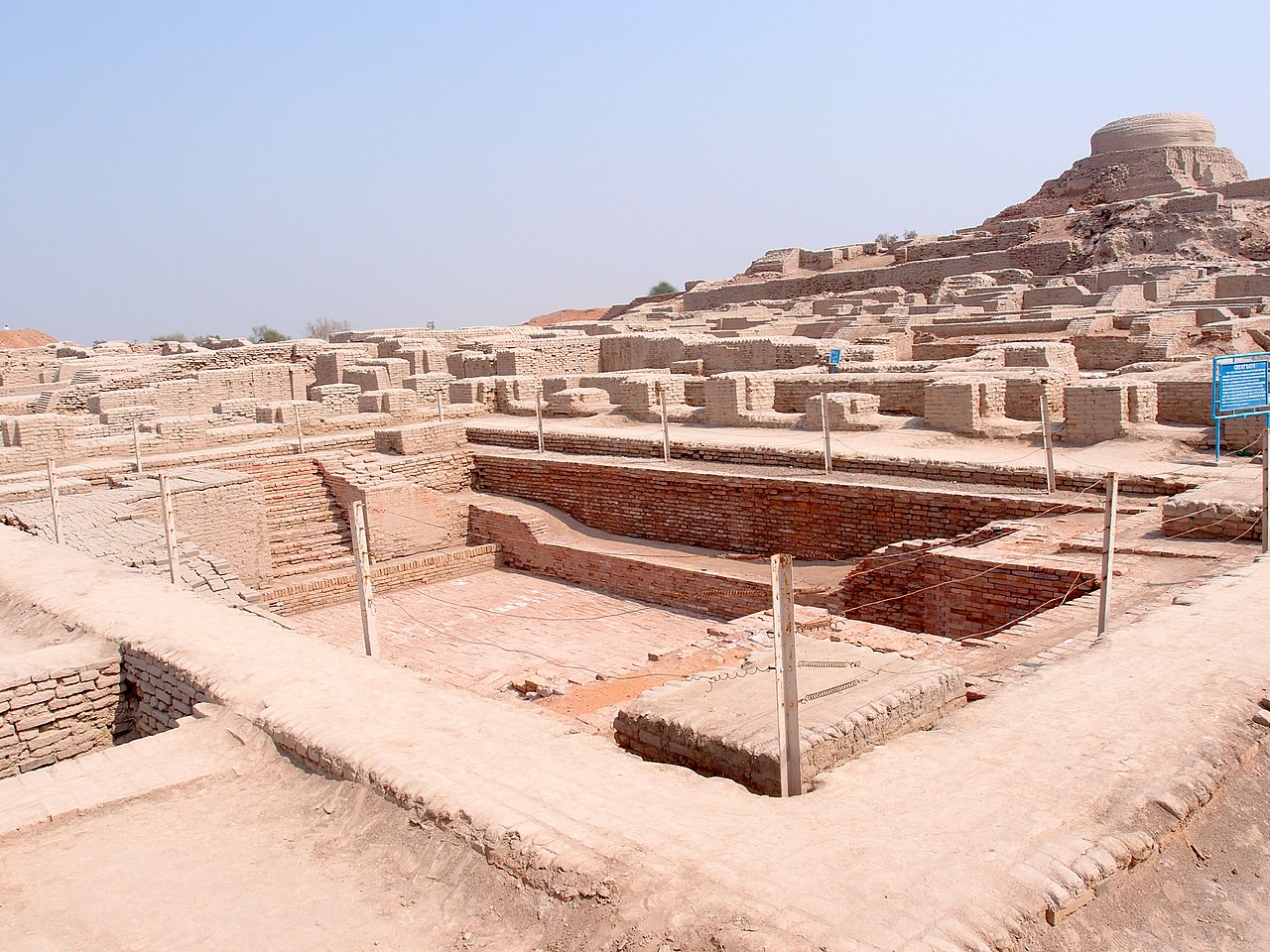
The Dancing Girl of Mohenjo-Daro is what generations of besotted archaeologists have named a 10.8 centimeter (4.25 inch) tall copper-bronze statuette found in the ruins of Mohenjo Daro. That city is one of the most important sites of the Indus Civilization, or more accurately, the Harappan Civilization (2600-1900 BC) of Pakistan and northwestern India.
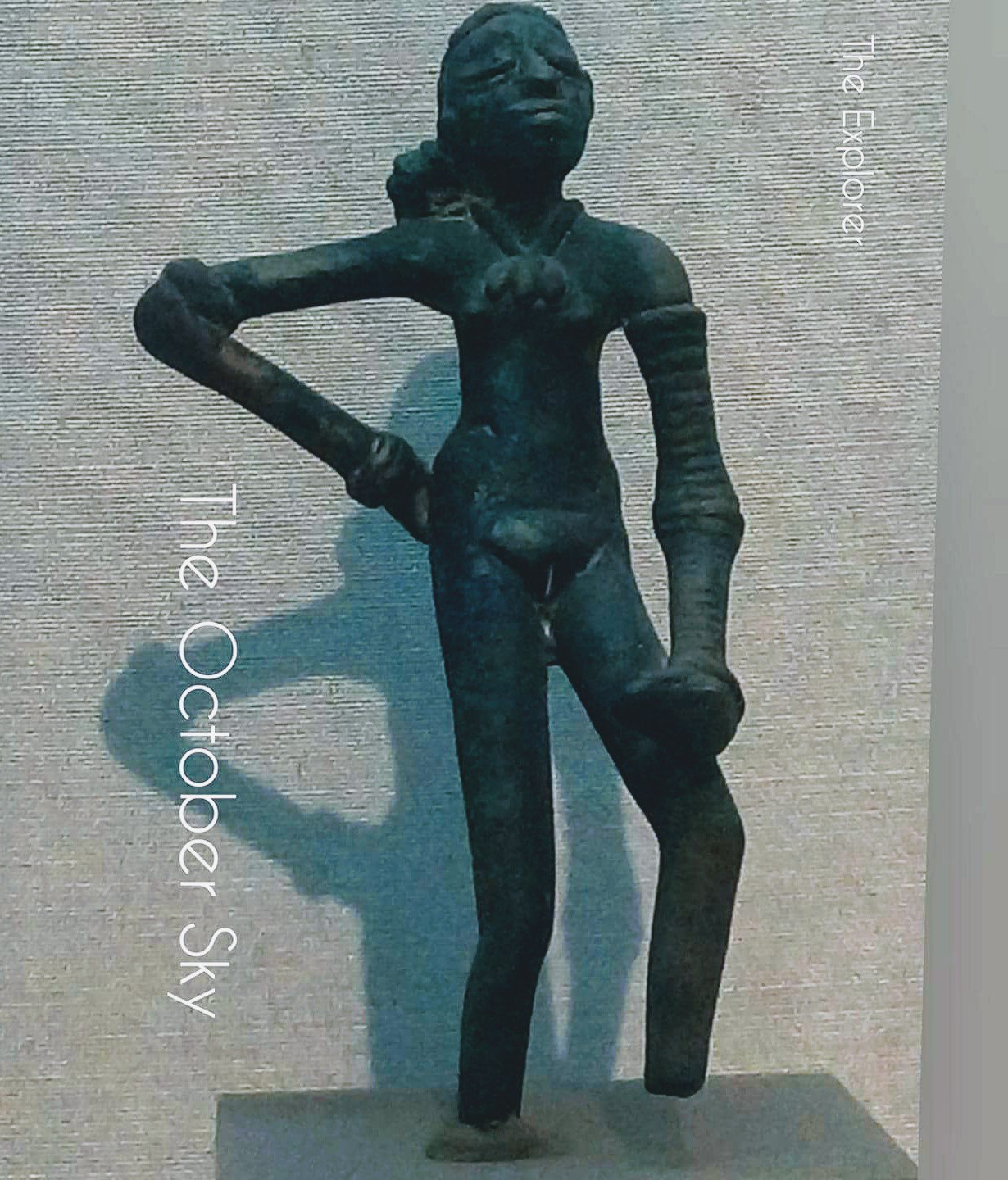
The Dancing Girl figurine was sculpted using the lost wax (cire perdue) process, which involves making a mold and pouring molten metal into it.
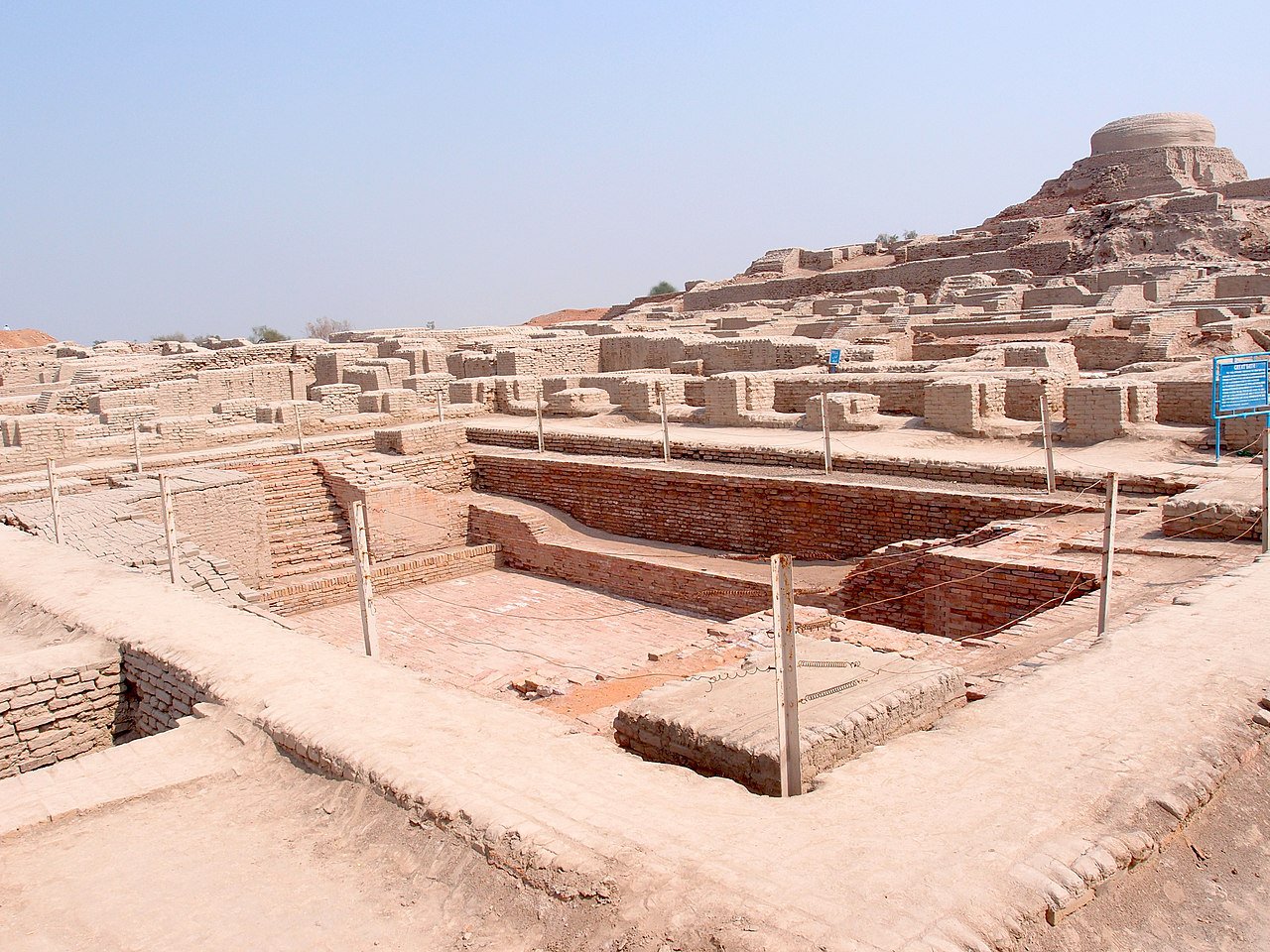
Made about 2500 BC, the statuette was found in the remains of a small house in the southwestern quarter of Mohenjo Daro by Indian archaeologist D. R. Sahni [1879-1939] during his 1926-1927 field season at the site.
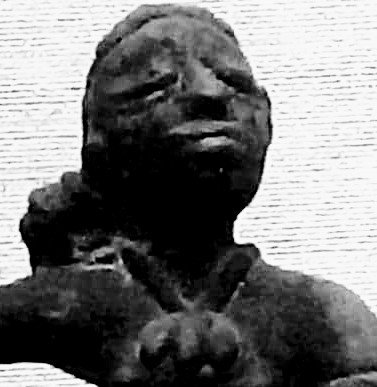
The figurine is a naturalistic free-standing sculpture of a nude woman, with small breasts, narrow hips, long legs and arms, and a short torso; her genitals are explicit. She wears a stack of 25 bangles on her left arm. She has very long legs and arms compared to her torso; her head is tilted slightly backward and her left leg is bent at the knee.
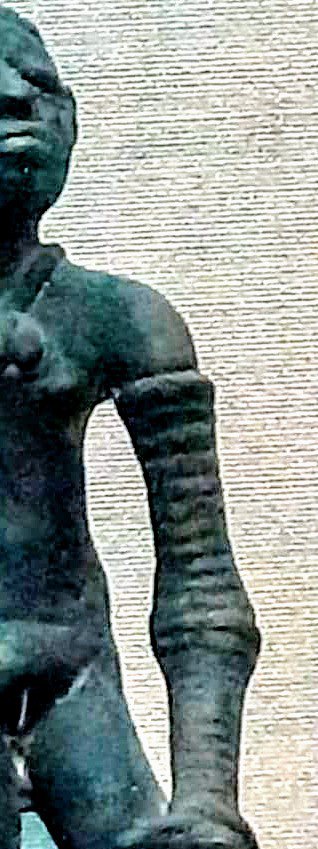
On her right arm are four bangles, two at the wrist, two above the elbow; that arm is bent at the elbow, with her hand on her hip. She wears a necklace with three large pendants, and her hair is in a loose bun, twisted in a spiral fashion and pinned in place at the back of her head. Some scholars suggest that the Dancing Girl statuette is a portrait of a real woman.
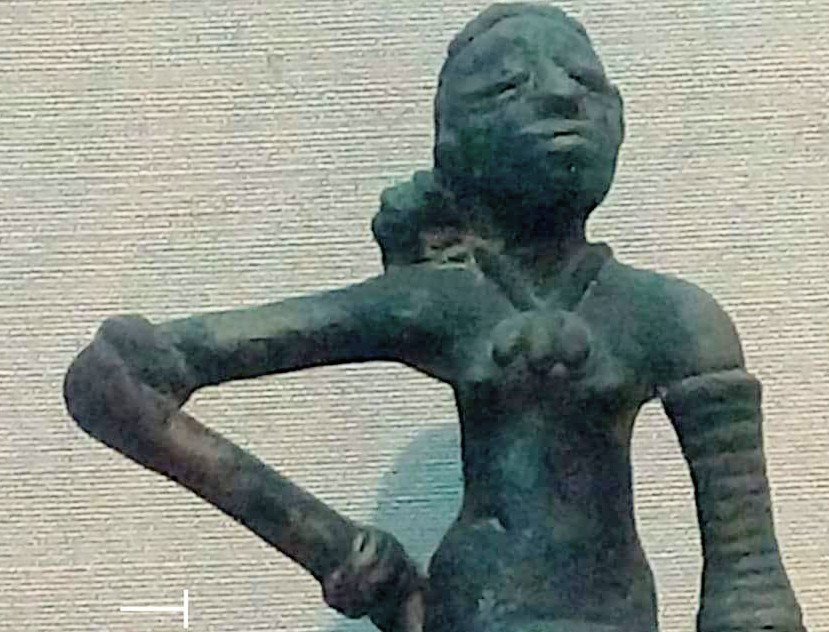
Although there have been literally thousands of figurines recovered from Harappan sites, including over 2,500 at Harappa alone, the vast majority of figurines are terracotta, made from fired clay. Only a handful of Harappan figurines are carved from stone (such as the famous priest-king figure) or, like the dancing lady, of lost-wax copper bronze.
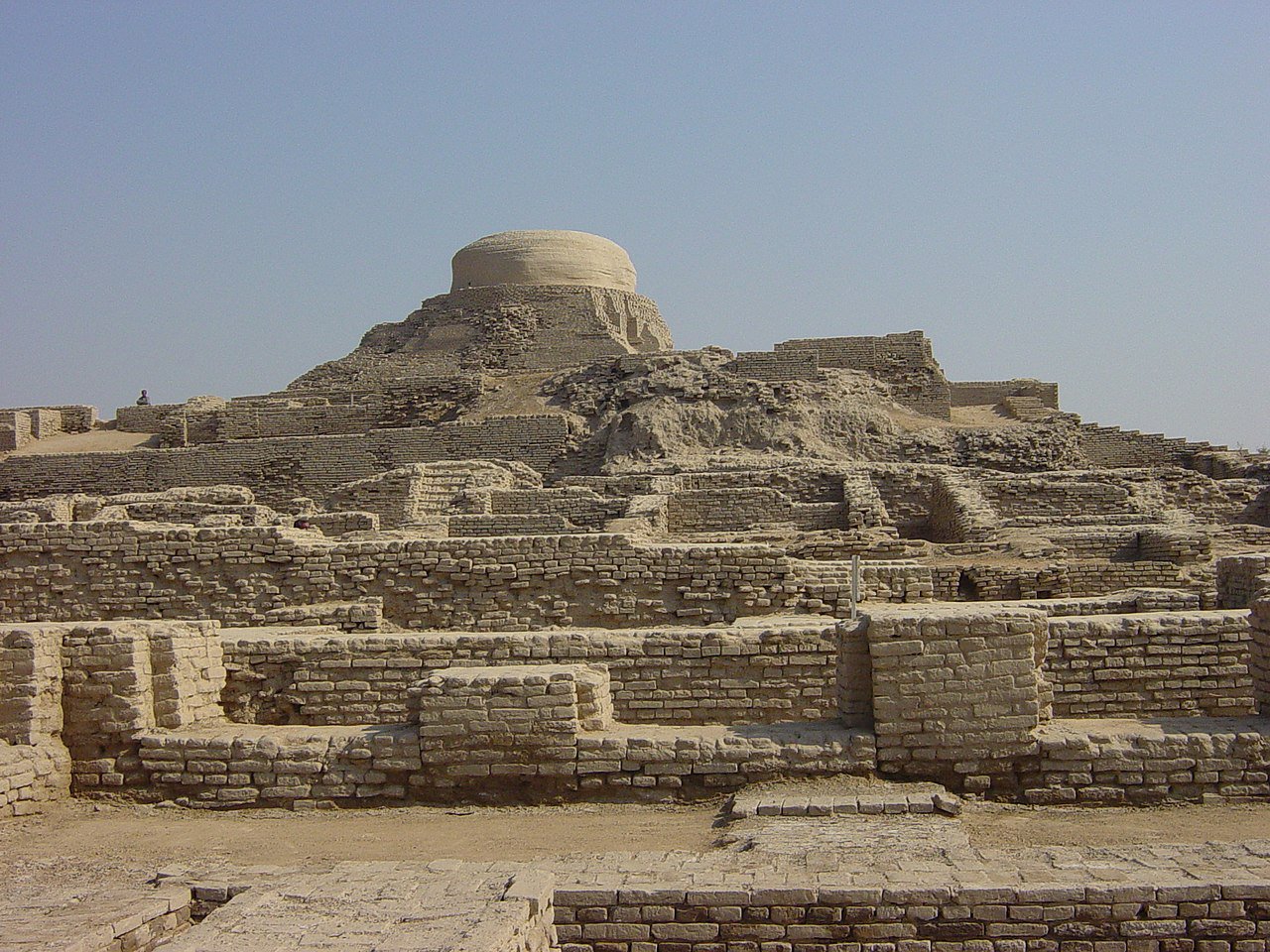
Figurines are an elaborate class of representational artifact found in many ancient and modern human societies. Human and animal figurines can give insight into concepts of sex, gender, sexuality and other aspects of social identity. That insight is important for us today because many ancient societies left no decipherable written language. Although the Harappans had a written language, no modern scholar has been able to decipher the Indus Script to date.
A recent survey of the use of copper-based metals used in Indus civilization sites (Hoffman and Miller 2014) found that most of the classic Harappan aged objects made of copper-bronze are vessels (jars, pots, bowls, dishes, pans, scale pans) formed from sheet copper; tools (blades from sheet copper; chisels, pointed tools, axes and adzes) manufactured by casting; and ornaments (bangles, rings, beads, and decorative-headed pins) by casting. Hoffman and Miller found that copper mirrors, figurines, tablets, and tokens are relatively rare compared to these other artifact types. There are many more stone and ceramic tablets than those made of copper-based bronze.
The Harappans made their bronze artifacts using a variety of blends, alloys of copper with tin and arsenic, and varying lesser amounts of zinc, lead, sulfur, iron, and nickel.
Adding zinc to copper makes an object brass rather than bronze, and some of the earliest brasses on our planet were created by the Harappans. Researchers Park and Shinde (2014) suggest that the variety of blends used in different products was the result of fabrication requirements and the fact that pre-alloyed and pure copper was traded into the Harappan cities rather than produced there.
The lost wax method used by Harappan metallurgists involved first carving the object out of wax, then covering it in wet clay. Once the clay was dried, holes were bored into the mold and the mold was heated, melting the wax. The empty mold was then filled with a melted mixture of copper and tin. After that cooled, the mold was broken, revealing the copper-bronze object.
Most of the images of women from Harappan-period sites are from hand-modeled terracotta, and they are primarily curvaceous mother goddesses.
The ethnicity of the woman depicted in the figure has been a somewhat controversial subject over the years since the figurine was discovered. Several scholars such as ECL During Casper have suggested that the lady looks African. Recent evidence for Bronze Age trade contact with Africa has been found at Chanhu-Dara, another Harappan Bronze Age site, in the form of pearl millet, which was domesticated in Africa about 5,000 years ago. There is also at least one burial of an African woman at Chanhu-Dara, and it is not impossible that the Dancing Girl was a portrait of a woman from Africa.
However, the figurine’s hairdressing is a style worn by Indian women today and in the past, and her armful of bangles is similar to a style worn by contemporary Kutchi Rabari tribal women.
British Archaeologist Mortimer Wheeler, one of many scholars besotted by the statuette, recognized her as a woman from the Baluchi region.
